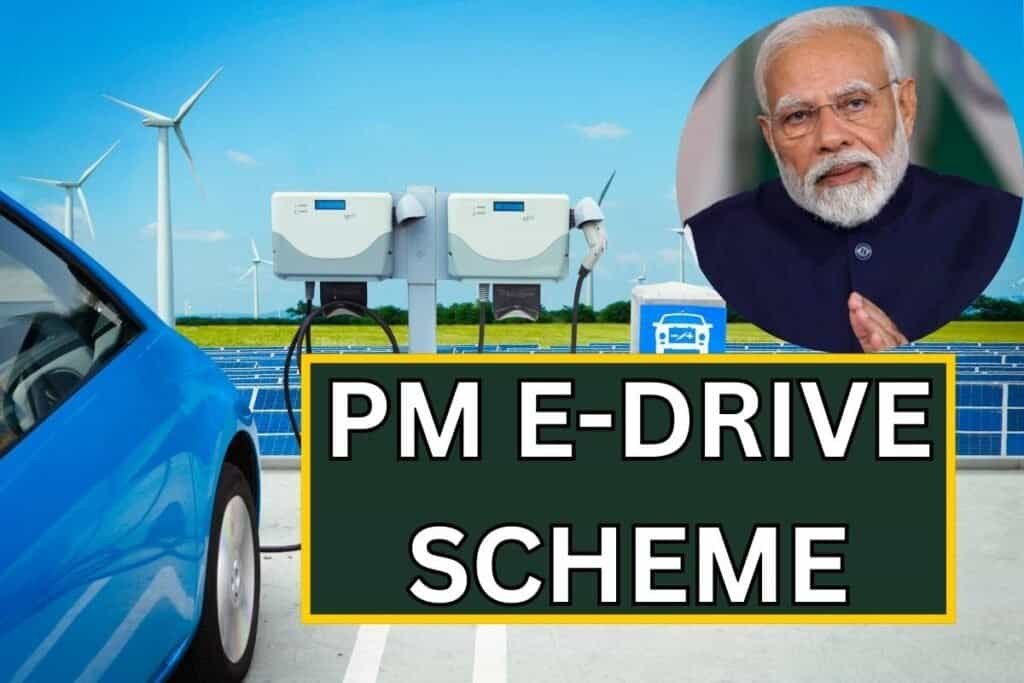The PM Electric Drive (E-DRIVE) subsidy program, which will cost Rs 10,900 crore, has been formally announced by the national government. Launched on October 1, 2024, and running through March 31, 2026, the program aims to hasten the adoption of electric vehicles (EVs) in India.
The initiative will focus on electric two-wheelers (e-2Ws), electric three-wheelers (e-3Ws), electric buses, and other new categories of EVs. Prior efforts like the Faster Adoption and Manufacturing of Hybrid and Electric Vehicles in India (FAME-I) and FAME-II projects being expanded upon by the Government E-DRIVE Scheme. The FAME-I programme, which was introduced in 2015, had an initial budget of Rs 795 crore and was later expanded to Rs 895 crore. FAME-II was unveiled in 2019 with a bigger budget of Rs 10,000 crore; this amount was later raised to Rs 11,500 crore in order to promote electric mobility through March 2024.
Following the conclusion of FAME-II, Rs 778 crore in funding was allocated for the Electric Mobility Promotion Scheme 2024 (EMPS-2024), which was put into action from April 1, 2024, to September 30, 2024. The government’s initiatives to promote electric mobility have been expanded with the inclusion of EMPS-2024 in the PM E-DRIVE Scheme.

Government EV Subsidy Scheme
The three primary parts of the PM E-DRIVE Scheme are grants for the building of capital assets, demand incentives for various EV categories, and administrative controls to guarantee a successful rollout.
The demand incentives will cover other new EV models as well as e-2Ws, e-3Ws (such as registered e-rickshaws and e-carts), e-ambulances, and e-trucks. Additionally, a sizeable amount of the money will be used to modernize EV testing organizations, install a comprehensive charging infrastructure, and deploy e-buses. Reducing the cost of EV acquisition for customers is a major goal. The initiative will provide a demand incentive of Rs 5,000 per kWh for e-2Ws and e-3Ws for the fiscal year 2024–2025. In FY 2025–2026, this will drop to Rs 2,500 per kWh with the goal of increasing the affordability of EVs and boosting their adoption nationwide.
The program includes funding for installing charging stations, growing the fleet of e-buses, and improving electric car testing facilities in addition to demand incentives. A whopping Rs 7,171 crore has been made aside for the development of capital assets, guaranteeing that India will provide a solid basis for the growth of electric vehicles.
To further stimulate the adoption of EVs, states are advised to provide additional fiscal and non-fiscal incentives, such as waivers of road taxes, reduced toll and parking fees, and exemptions from permission requirements. State governments have been urged to fully participate and offer these incentives in line with the central plan by the Ministry of Heavy Industries (MHI).
The entire Rs 10,900 crore budget is scheduled to be allocated over two years, with Rs 5,047 crore for FY 2024–25 and Rs 5,853 crore for FY 2025–26. The government wants to help with the purchase of more than 14,000 e-buses, set up 2,000 charging stations, and improve the nation’s infrastructure for EV testing. The Project Implementation and Sanctioning Committee (PISC), an interministerial body headed by the Secretary of Heavy Industries, will supervise the plan.
The successful implementation of the program and progress monitoring will fall under the purview of the PISC. It will also have the authority to address any difficulties, including modifying incentives, expanding the number of e-buses, and approving standards for testing agencies.
Vehicles must be equipped with cutting-edge battery technology and registered as “Motor Vehicles” under the Central Motor Vehicle Rules (CMVR) in order to be eligible for the PM E-DRIVE incentives.


